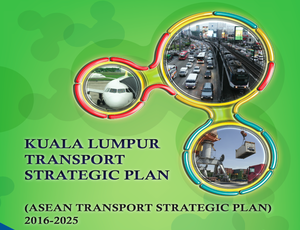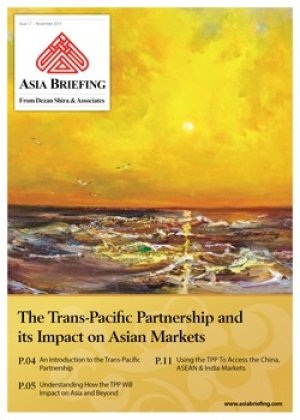A Guide to ASEAN’s Strategic Transport Action Plan
 By: Ellena Brunetti
By: Ellena Brunetti
Aware that well-developed and organized transport infrastructure plays a vital role in economic growth, ASEAN’s leadership has recently published its 2016-2025 ASEAN Strategic Transport Action Plan. Dubbed the Kuala Lumpur Transport Strategic Plan, the document sets out specific goals with the intention of boosting connectivity within the region. In the following article, we take a closer look at the initiatives of the plan, what has been done so far, and how the various projects will impact businesses operating within the region.
General Goals of the 2016-2025 Master Plan
The main objective of the master plan is to implement the second pillar of the ASEAN Economic Community (AEC) blueprint – creating a competitive economic region. In the context of the strategic transport plan, the second pillar of the AEC aims to develop ASEAN as a single market and production base by enhancing land, air, and maritime transport between ASEAN member states.
This plan also aims at ensuring a sustainable transport network, by formulating a regional policy framework to support sustainable transport, including low carbon modes of transport, integration of transport, and land use planning.
The region’s connectivity with China, South Korea, and Japan is also at the core of the plan, and the development of the ASEAN transport network is expected to combine with China’s “One road, One belt” project.
The following sections outline sector specific goals of the project.
 RELATED: Pre Investment and Market Entry Advisory from Dezan Shira & Associates
RELATED: Pre Investment and Market Entry Advisory from Dezan Shira & Associates
Land Transport Projects
With regard to land transport infrastructure, including roads and rail, the strategic transport action plan highlights the importance of two pan ASEAN projects as well as a number of small initiatives. In conjunction these projects are likely to be the focal point of land based infrastructure during the coming years.
Large scale infrastructure projects being promoted by the strategic transport plan include the following:
- The ASEAN Highway Network (AHN): an infrastructure project that seeks to bring connectivity by building land transport corridors linking all ASEAN member states and countries beyond. This prioritized project seeks to complete the remaining missing links and upgrade roads within ASEAN’s designated Transit Transport Routes (TTRs)
- Singapore-Kunming Rail Link (SKRL) Project: This project plans to construct a circular rail link connecting the capital cities in all mainland ASEAN countries, such as Thailand, Cambodia, Lao PDR, Viet Nam, and Myanmar. Currently, two sections of the SKRL are under construction. Further, there is the possibility that SKRL could be extended to Surabaya, Indonesia in the event that a pending study green lights the project.
In addition to large scale infrastructure projects, the strategic transportation plan will focus on the following initiatives as a means of boosting the quality of transport for those traveling within the region. Currently the centerpiece of these reforms surrounds motor transport and includes the introduction of the following:
- Infrastructure Upgrades: promote the installation of common road signs, route numbering, and aim to enhance the use of the Intelligent Transport System (ITS)
- Improving Road Safety : ASEAN leaders have set the fight against fatal accidents as a priority for the next ten years. The issue of safety is a pressing concern for many countries within the region. According to the global status report on road safety, issued in 2015 by the World Health Organization, Thailand has been ranked 2nd for the deadliest road traffic, just after Libya. Most of the ASEAN countries are above the average worldwide traffic fatality rate including Vietnam (24 percent), Malaysia (24 percent), and Myanmar (20 percent). In an effort to protect the safety of ASEAN drivers, regional leaders have agreed to push for public safety and awareness by promoting road safety training in schools, road safety information campaigns, and other initiatives.
 RELATED: The ASEAN Trade In Goods Agreement (ATIGA) – Local Content Requirements
RELATED: The ASEAN Trade In Goods Agreement (ATIGA) – Local Content Requirements
Aviation Transport Projects
In the light of the rapidly growing importance of air transportation, along with the accelerated restructuring of the global aviation market, ASEAN’s Strategic Transport Plan sets out to strengthen the region’s aviation industry through the establishment of the ASEAN Single Aviation Market (ASAM)
To do so, the strategic transport plan includes outlines for the following actions:
- Air services liberalization: This effort will focus not only on pursuing further liberalization of air transport’s ancillary services, but also the conclusion of aviation agreements with dialogue partners. As seen in the past with the the landmark ASEAN-China Air Transport Agreement (AC-ATA) and its Protocol on ‘unlimited third and fourth freedom traffic rights between contracting parties’, future air agreements are likely to open more traffic rights for ASEAN service providers. Notable parties that ASEAN is currently working to establish agreements with include the EU, India, Japan, and Korea.
- Enhancing Aviation Safety Through International Harmonization: the agreement plans to adopt regulations such as those prescribed by the International Civil Aviation Organization. The ASM will also work to promote an environmentally-friendly aviation market, as emissions from aviation operations are thought to pose a significant risk to climate change as the industry grows.
- Enhancement of airport infrastructure: With the implementation of ASAM, the outbound and inbound air traffic movements in ASEAN will be significantly increased. In view of this, it becomes essential for the ASEAN states to enhance their airport infrastructure, and more specifically, to undertake projects on the construction of regional terminals and low cost carriers terminals, in order to meet the expected surge in economic and tourist air activity.
Maritime Transport Projects
Regarding the maritime sector, the Strategic Transport Plan aims to establish the ASEAN single shipping market and in doing so promote maritime safety in line with international standards. The initiatives within the following policy goals are thought to provide security and develop the strategic maritime corridors within ASEAN.
- Enhancing the Capacity of the 47 Designated Ports: The plan aims to enhance regional ports including megaports such as those found in Singapore and Malacca.
- Develop an Efficient and Integrated Inland Waterway Transport Network: This project aims to enhance shipping connectivity within CLMV (Cambodia, Laos, Myanmar, Vietnam) nations through the enhancement of river shipping routes within the Mekong region.
|
Asia Briefing Ltd. is a subsidiary of Dezan Shira & Associates. Dezan Shira is a specialist foreign direct investment practice, providing corporate establishment, business advisory, tax advisory and compliance, accounting, payroll, due diligence and financial review services to multinationals investing in China, Hong Kong, India, Vietnam, Singapore and the rest of ASEAN. For further information, please email asean@dezshira.com or visit www.dezshira.com. Stay up to date with the latest business and investment trends in Asia by subscribing to our complimentary update service featuring news, commentary and regulatory insight. |
Annual Audit and Compliance in ASEAN
For the first issue of our ASEAN Briefing Magazine, we look at the different audit and compliance regulations of five of the main economies in ASEAN. We firstly focus on the accounting standards, filing processes, and requirements for Indonesia, Malaysia, Thailand and the Philippines. We then provide similar information on Singapore, and offer a closer examination of the city-state’s generous audit exemptions for small-and-medium sized enterprises.
 The Trans-Pacific Partnership and its Impact on Asian Markets
The Trans-Pacific Partnership and its Impact on Asian Markets
The United States backed Trans-Pacific Partnership Agreement (TPP) includes six Asian economies – Australia, Brunei, Japan, Malaysia, Singapore and Vietnam, while Indonesia has expressed a keen willingness to join. However, the agreement’s potential impact will affect many others, not least of all China. In this issue of Asia Briefing magazine, we examine where the TPP agreement stands right now, look at the potential impact of the participating nations, as well as examine how it will affect Asian economies that have not been included.
 An Introduction to Tax Treaties Throughout Asia
An Introduction to Tax Treaties Throughout Asia
In this issue of Asia Briefing Magazine, we take a look at the various types of trade and tax treaties that exist between Asian nations. These include bilateral investment treaties, double tax treaties and free trade agreements – all of which directly affect businesses operating in Asia.









